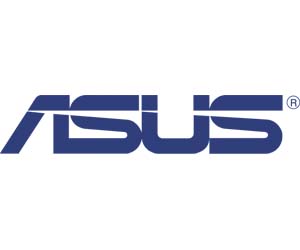Key Features of ASUS Chromebook Solutions
The ASUS Chromebook Enterprise Flip CX5400 and the ASUS Chromebook Enterprise Flip CX3400 combine form and function to aid the hybrid work experience. In much the same way that hybrid workers balance the demands of at-home and in-office work, ASUS’s CX5400 and CX3400 Chromebooks deliver both design and performance to maximize ease of use without sacrificing core capabilities.
“ASUS Chromebook Enterprise provides a smart, secure and cost-effective way to enable cloud-first businesses and their employees to work anywhere,” says Herman Wong, a channel marketing manager with ASUS. “It’s easy to manage and update and helps keep costs down.”
When it comes to connections, both devices make it easy to hook up an external display and increase efficiency at home: The CX3400 boasts two USB 3.2 Type-C ports for transmitting both data and power, while the CX5400 ups the ante with two Thunderbolt 4 ports.
RELATED: Find out what businesses need to know about ergonomics for remote workers.
Structurally, ASUS Chromebooks are put through a battery of tests to ensure they meet industry-leading standards to deliver military-grade durability. These include shock tests — six harsh shocks in each direction to simulate impact — along with vibration, hinge, pressure, temperature and altitude tests to ensure that no matter when, where or how staff need to use ASUS devices, these Chromebooks are ready to perform.
From a functional standpoint, physical webcam privacy shields provide peace of mind, while the CX3400 has dual webcams — one front-facing and one “world-facing” — making it easy to capture photos and videos in tablet mode.
When it comes to form, meanwhile, ASUS’s NanoEdge display maximizes screen area and screen-to-body ratio, providing a more immersive viewing experience. And with convertible keyboards rather than detachable ones, ASUS Chromebooks offer an improved tactile feel with 1.5-millimeter key travel.
ASUS Chromebooks Streamline Hybrid Work
Eric Born, a content marketing specialist at ASUS, is experiencing the benefits of ASUS Chromebooks firsthand as he continues to work remotely.
“I’ve been living what it means to work entirely remotely,” he says. “The ASUS Chromebooks have really great connectivity, and this type of versatility matters so much. The ability to easily connect an external display is huge for the home office, plus the ability of the CX5400 to help charge other devices.”
Both the CX5400 and CX3400 come with touchpads and built-in garaged styluses that require just 15 seconds of charging for 45 minutes of use, and include the 360-degree ErgoLift hinge, which lets users smoothly adjust and secure the display at any angle.
For enterprise IT departments, meanwhile, support for zero-touch enrollment comes standard. This seamless deployment method for Chromebook enterprise devices makes large-scale rollouts fast, easy and secure. With zero-touch enrollment, IT departments can drop ship Chrome OS devices that will automatically enroll into enterprise administration as soon as the end user connects to the internet. This eliminates the need for manual device enrollment, and enables the user to simply receive the device, connect to the internet and log in.
MORE FROM BIZTECH: Learn how other businesses have successfully onboarded workers remotely.
ASUS Chromebooks Put Users in Control
“There are a lot of reasons why organizations like Chrome OS,” says Born. “It’s very easy to manage and easy to keep secure. The way it’s designed puts companies and users in control in a very seamless and automatic way.”
The CX3400 and the CX5400 leverage Intel processors, up to the Intel Core i7-1160G7 with a 12M cache and a 4.4GHz max Turbo frequency. The additional processing power increases the multitasking capabilities of the devices, letting users flip quickly between multiple open apps.
When it comes to battery life, both Chromebooks offer up to 10 hours of performance — the CX5400 uses a 48-watt-hour, 3S1P, three-cell Li-ion battery, while the CX3400 uses the 50Wh version. When fast charging, the CX5400 can go from zero to 60 percent power in as little as 49 minutes.
EXPLORE: Learn how to simplify device management — even in a remote work world.
Underpinned by Google’s Titan-C chip, meanwhile, the CX5400 and CX3400 deliver continuous security, user protection and system integrity to reduce the risk of device compromise.
Chrome OS, meanwhile, makes it easy for IT teams to manage device deployments at scale and keep them secure wherever and however users are working. Automatic updates take place in the background every four weeks for continuous protection against new threats.
Chrome OS also enables IT teams to manage device fleets from anywhere and delivers a cloud-first experience that empowers users to do their best work no matter where they are located. The OS also enables the ASUS devices to boot up quickly, reducing downtime, and helps them maintain speedy performance over time.
Brought to you by:












